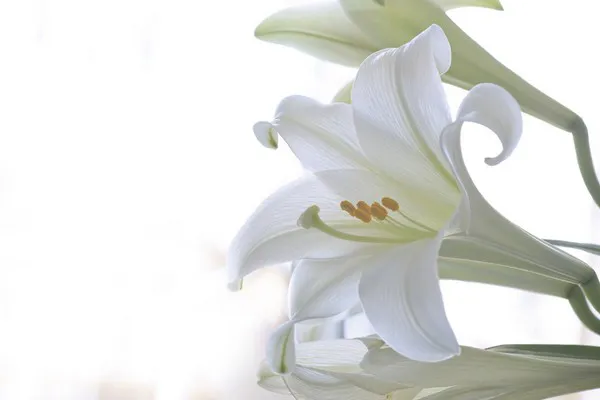This post will discuss the soil and ground requirements for lily cultivation.
Soil:
The soil is the top layer of the earth's crust, but the definition in soil science is more specific, namely that layer of the earth's crust that is rooted by plants (the rhizosphere), or in which soil-forming processes take place. According to this definition, solid rock and the wet, unripened ('in which no soil has formed') subsoil of loose sediments are not part of the soil. The soil-forming processes lead to changes in the composition of the soil, which become visible, among other things, in the formation of soil horizons. The terms soil and ground are often used interchangeably, but the latter has a broader meaning. Soil science is indispensable for understanding natural processes and the functioning of ecosystems. Humans make use of soil functions in many different ways.

Ground:
Ground is a mixture of weathered solid material (sediment), water, and air that occurs on the earth's surface or (flat) below. The non-weathered solid material is called rock. The weathering process is a result of the action of frost and thaw (alternately freezing and thawing water in rock crevices), and of sun, rain, and wind on rock, which eventually leads to fractures in the rock. Pieces of rock come loose as a result, roll down, after which the smaller parts are carried by rivers towards the river delta. Due to further wear, smaller and smaller parts are formed, successively gravel, sand, and finally silt: the mineral components of the ground. Peat is created by the death and rotting of plants underwater in low-oxygen conditions. Humus is created by biodegradation of dead plants in oxygen-rich 'terrestrial' conditions (on land). Peat and humus are the organic components of the ground.
Determination:
The above definitions of soil and soil show that ground is the physical part and soil is the living part. The search for suitable plots for the cultivation of lilies proceeds through the following steps:
First of all, it must be determined whether there have been lilies on the plot before and if so, how many years ago. To determine this, you can use a tool such as boerenbunder.nl*. Naturally, preference is always given to fresh arable land without nematodes. If this is not sufficiently available, you can choose a plot where there have been no lilies in the last 6 years. This period is necessary to decimate the soil and leaf nematode population left behind after the previous cultivation of lilies. To chase away the last nematodes, another crop of Marigolds (Tagetes) is sown as a preliminary fruit for the lilies. Nematodes hate this plant. Tagetes is also an important nutrient for the soil, just like animal manure and compost. It increases the organic matter content of the soil.
* boerenbunder.nl
With a subscription to boerbunder.nl you can see for every plot in the Netherlands what has been grown on it in the last 10 years. At boerenbunder.nl you can also see how many percent of heavy clay, light clay, heavy clay, light clay, sand, and loam the soil profile is built up and the groundwater level of the plot is displayed. Boerenbunder.nl also offers an up-to-date vegetation map obtained from satellite images on which you can see per plot when, for example, it was sown and harvested, the height difference of the plot and whether there are ditches and how long they are, and what type of ditches they are. Finally, it is indicated whether the plot falls within a Natura 2000 area.
Then one looks at the physical condition of a plot and thus the physical properties of the ground.
Ground requirements for lily cultivation:
For lily bulb cultivation, the physical condition of the ground is of decisive importance for obtaining a good product that can be planted and harvested mechanically. The ground must therefore meet the following requirements.
1. Good moisture and air permeability
Information from the landlord of the plot plays a major role in determining moisture and air permeability. He knows better than anyone where the bad spots are. In order to get an even better picture of the moisture and air permeability of the plot, a drone can be used during the preliminary cultivation for the lilies, with which one can observe from above at which places the crop shows disturbances in growth. In almost all cases, this is a good indicator of the moisture and air permeability on site. If this is only a small spot, this need not be a reason not to rent the plot, because it can be decided to skip this small spot during planting. However, if it concerns larger areas, it must be determined what causes the disturbed growth of the pre-crop. If it appears that the overall drainage of the plot is not good, it can be decided to drain before the start of lily cultivation. If the poor moisture and air permeability of the plot is caused by superficial compaction caused by heavy machinery, thorough mechanical ground preparation will suffice. If the poor moisture and air permeability of the plot is caused by compaction of the ground caused by a too high content of fine clay fraction or too low a content of organic matter, it is advisable not to use this plot for the cultivation of lilies.
2. Good machinability:
A plot where lilies are grown must be suitable for working with heavy machinery. To determine whether this is the case, it is sufficient to check this with the landlord and growers, and contractors in the immediate vicinity of the plot.
Soil requirements for lily cultivation:
For lily bulb cultivation, in addition to the physical condition of the soil, the condition of the soil life present is of decisive importance for obtaining a good product. The soil must therefore meet the following requirements.
1.Pathogenen
The main pathogens (pathogens) of the Lily occurring in the soil are Fusarium, Rhizoctonia, Phytophtora (Wet foot rot), Pythium (Root rot), Botrytis (Fire). A field pathogenicity test is used to determine the disease pressure of the soil of a plot to be rented. The values of Rhizoctonia, Phytophtora, Pythium, and Botrytis are the least important here because an infestation by these pathogens can be sufficiently prevented by means of the correct cultivation measures. However, if the field pathogenicity test in the soil establishes a too high percentage of Fusarium, the plot is not suitable for lily cultivation because experience shows that Fusarium infestation cannot be prevented by means of the correct cultivation measures.
2.Acidity (PH)
For which group of lilies the plot is suitable depends on the acidity of the soil. Asiatic and Longiflorum hybrids prefer a pH of 6 to 7 for optimal growth and Oriental hybrids prefer a pH of 5.5 to 6.5. If a plot meets both the soil and soil requirements for lily cultivation, the plot is suitable for cultivating lilies.
 Lily Company
Lily CompanyCornelis Kuinweg 15
1619 PE Andijk
T +31 (0)228 592814
F +31 (0)228 592844
info@lilycompany.nl
www.lilycompany.nl
